Pest Control Brochure: Effective Management Strategies
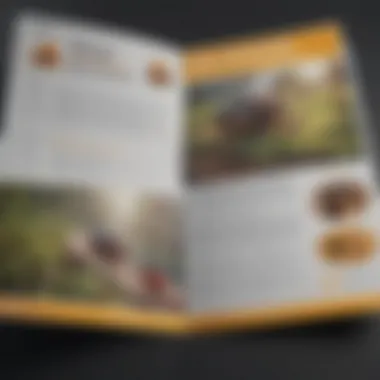
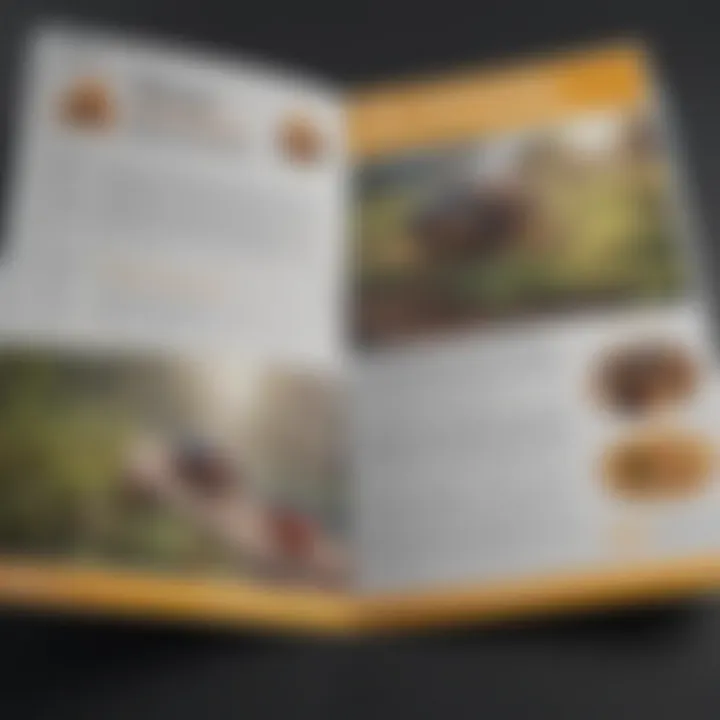
Intro
Pest control is a critical aspect of maintaining a healthy living environment. Many homeowners often find themselves overwhelmed with the options available for pest management. One effective tool to address this need is the pest control brochure. This guide serves as a resource, providing comprehensive strategies to not only manage existing pest issues but also prevent future infestations. This article will systematically explore various elements crucial for creating impactful pest control brochures.
Understanding the Pest
Identification
To effectively manage pests, it is essential to first identify what you are dealing with. Different pests require different approaches. Common household pests include ants, cockroaches, rodents, and termites. Knowing their specific characteristics helps in selecting the proper control measures.
When creating a brochure, including high-quality images or illustrations can significantly enhance the reader's ability to recognize common pests. Use clear description of key features such as size, color, and behavior. For instance, differentiating between a harmless spider and a potentially dangerous one can be vital.
Life Cycle
Understanding the life cycles of pests allows for targeted interventions. For example, some pests may reproduce quickly, leading to larger infestations if not addressed promptly. Including information on the stages of life cycle in a pest control brochure helps homeowners time their control methods effectively. Consider providing a simple chart outlining each pest’s life cycle in brief.
Pest Prevention Strategies
Environment Modification
Preventive measures can significantly reduce the risk of infestations. Some environmental modifications are easy and inexpensive.
- Seal Entry Points: Close gaps in windows, doors, and walls.
- Maintain Cleanliness: Regularly clean food residues and clutter around the home.
- Proper Waste Management: Use sealed containers for trash.
Modifying your environment serves as the first line of defense against pests.
Physical Barriers
Using physical barriers can be an excellent preventive strategy. Installing screens on windows and doors, using mouse traps, or applying sticky traps for insects can decrease pest access to your home. Highlight these strategies in a brochure with clear instructions on their application and effectiveness.
Control Methods
Chemical Control
Chemical control remains a common approach in pest management. However, it is essential to choose products wisely. Some products are more suited for particular pests and settings. Be sure to include safety instructions and proper application methods in your brochure to guide readers. Importantly, encourage users to prioritize safety, particularly in homes with children or pets.
Biological Control
Another effective method is biological control, which involves using natural predators to manage pest populations. For example, introducing ladybugs can control aphids in a garden. These strategies are often eco-friendly and can be very effective. Emphasize the importance of understanding the dynamics between pests and their natural enemies to maximize effectiveness.
"Effective pest control requires a blend of identification, prevention, and control methods tailored to specific needs."
This comprehensive understanding of pests will enable homeowners to not only manage current infestations but also protect their living spaces effectively.
Understanding Pest Control Brochures
Pest control brochures serve as vital tools in disseminating crucial information regarding pest management. Understanding their purpose and significance is paramount for both homeowners and professionals in the pest control industry. This knowledge assists in bridging the information gap between pest control providers and those seeking solutions. Effective brochures contribute not only to the industry's credibility but also to the empowerment of the target audience.
Definition and Purpose
A pest control brochure is a printed medium designed to inform the audience about pest control options and strategies. These brochures typically outline various pests, their potential impacts, and ways to manage them. The core purpose is to educate individuals on how to protect their homes and health from pest infestations. By presenting coherent information and practical advice, these brochures aim to inspire proactive approaches in pest management. The design and wording of these pamphlets can directly influence a reader's understanding and actions towards pest control. Therefore, defining the objectives up front ensures the brochure effectively reaches its intended goal.
Target Audience Analysis
Identifying the target audience is essential in creating an effective brochure. For pest control brochures, the primary audience often includes homeowners and housewives who might feel overwhelmed by the complexity of pest management solutions. Understanding their preferences and concerns can significantly shape the content design.
Key components to consider include:
- Demographics: This includes age, education level, and income, as they determine how complex or simple the language should be.
- Interests: People interested in eco-friendly solutions versus those focused on immediate results have different needs.
- Concerns: Highlighting common fears, such as health risks associated with pests or the safety of children and pets, can make the content more relatable.
In-depth audience research can lead to tailored messages that resonate with individuals. This personalization increases the likelihood that the pamphlet will be read and used as a trusted resource for pest management strategies.
"A well-designed brochure meets the audience where they are and guides them to informed decisions."
Understanding the nuances of the target audience ensures that the brochure's content is not only relevant but also compelling enough to encourage action. Through thoughtful analysis, pest control brochures can articulate clear messages that encourage preventative behaviors and inform homeowners of practical solutions.
Key Elements of an Effective Brochure
Creating an effective pest control brochure requires careful consideration of various elements that contribute to its overall impact. Characterized by clear messaging and appealing visuals, an effective brochure serves as a practical tool for communicating pest management strategies. Homeowners and housewives can refer to these brochures to gain important insights into pest control, which can empower them to take appropriate actions when dealing with pests.
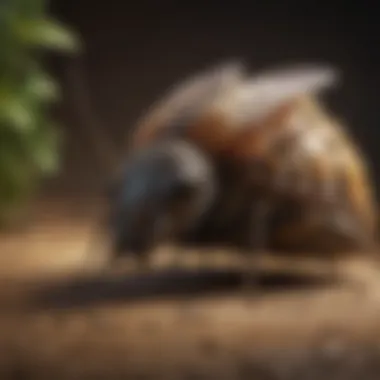
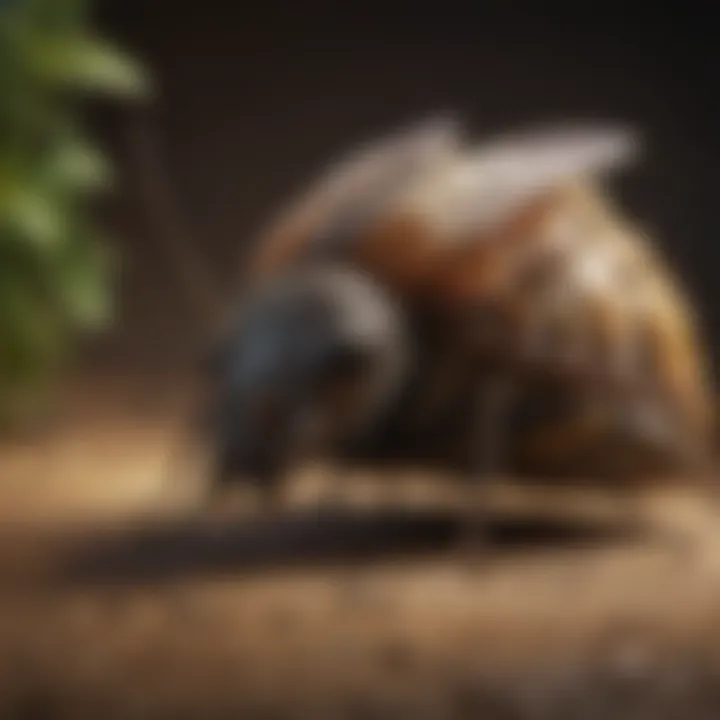
Several key components are indispensable to enhance the effectiveness of a brochure. The following sections will discuss in detail these elements, shedding light on their significance in engaging the target audience and ensuring clarity in communication.
Visual Appeal and Design
Visual appeal plays a critical role in the effectiveness of a pest control brochure. An enticing design does not only attract attention but also facilitates better understanding of the information presented. A well-designed brochure should include a balanced mix of graphics, images, and text, ensuring that the layout guides the reader's eye from one important element to the next.
- Color Scheme: The colors chosen should align with the subject matter. For instance, muted earthy tones can communicate a natural approach to pest control, while brighter colors can signal urgency.
- Images: High-quality images of common household pests, treatment methods, and prevention tips create immediate recognition. Images should be relevant and straightforward to ensure that viewers can quickly comprehend the material.
- Fonts: Choosing legible fonts is essential. A mix of bold headings alongside easy-to-read body text aids in understanding.
- White Space: Strategic use of white space creates breathing room in the design. This makes the brochure less overwhelming and guides readers to focus on key information.
The goal is to create a brochure that not only informs but also captivates the reader's attention, prompting them to engage with the material.
Concise and Informative Text
The text on a pest control brochure should be both concise and informative. Readers often skim through brochures, which means that the content must be presented in a way that conveys vital information quickly. Here are the main considerations when crafting the text:
- Clarity: Avoid jargon or complex terms in favor of straightforward language. When addressing homeowners, it is vital to use terminology that is easy to comprehend. This ensures that even inexperienced individuals can follow the instructions or guidance.
- Bullet Points: Use bullet points to summarize key points. This technique allows readers to grasp essential information at a glance. For example, outline the top pests homeowners may encounter and include clear steps for identification or control.
- Headers and Subheaders: Dividing the text into sections with specific headers helps in organizing the content. This way, readers can easily find the information they need without having to read through lengthy paragraphs.
- Call to Action: Encourage readers to take further steps, whether that involves contacting a pest control service or trying a DIY solution. An effective call to action can be instrumental in engaging potential clients.
In summary, a brochure that effectively combines visual elements with concise text can significantly enhance communication. Before finalizing the design, it is crucial to revise and refine the content to ensure clarity, engagement, and effectiveness.
"A well-designed brochure with clear messaging can empower homeowners, enabling them to tackle pest-related challenges with confidence."
By utilizing these outlined strategies, a pest control brochure can become a highly effective tool for educating and guiding the target audience.
Content Structure and Organization
Content structure and organization are fundamental aspects when creating an effective pest control brochure. A well-organized brochure enhances readability and allows the audience to find information effortlessly. Clear headings and subheadings provide a logical flow, guiding readers through each section. This clarity is especially beneficial in pest management, where urgency often dictates quick decision-making. Furthermore, good structure helps in highlighting key messages, making them more memorable.
Additionally, an organized approach reduces cognitive load for the reader. When information is chunked into manageable sections, it improves understanding and retention. Effective brochures often include consistent formatting and spacing, contributing to ease of navigation. Thus, a keen focus on content structure not only conveys information but also influences the reader's attitude towards pest control resources.
Prelims to Pest Identification
Pest identification is a critical first step in effective pest management. Understanding the specific types of pests that may invade a space can dictate the methods of control that are employed. This section aims to provide essential details on how to accurately recognize common pests, helping homeowners and housewives identify potential threats proactively.
Key indicators such as size, color, and typical habitats can significantly assist in effective identification. For instance, noticing frass or droppings may indicate the presence of termites, while webbing might signal spiders. Providing pictures in the brochure can enhance this section, offering visual cues that further aid in pest identification.
Behavioral Patterns of Common Pests
Understanding the behavioral patterns of common pests is crucial in devising effective control measures. Each type of pest behaves differently, impacting their propensity to invade homes and the methods for managing them. Learning about these patterns allows homeowners to anticipate pest problems and adopt preventive measures accordingly.
For example:
- Ants often follow scent trails, making it important to locate their entry points.
- Cockroaches tend to be nocturnal, suggesting that traps should be best placed overnight.
- Bedbugs usually hide in dark crevices, indicating a need for thorough inspections in targeted areas.
Methods of Control and Prevention
This section outlines various methods of pest control and prevention. A diverse range of approaches exists, and understanding these allows homeowners to choose the right strategy for their context. Effective pest control can be divided broadly into chemical, biological, and physical methods.
1. Chemical Methods:
These often involve traditional pesticides. It's important to choose products that are both effective and safe for residential use.
2. Biological Methods:
This method utilizes natural predators or parasites to control pest populations. For instance, releasing ladybugs can effectively manage aphids.
3. Physical Methods:
These are non-chemical options, such as traps or barriers, that physically block or capture pests. This can include screens on windows or live traps for rodents.
Utilizing Visuals in Brochures
Visuals play a critical role in the effectiveness of pest control brochures. In a world where people are increasingly drawn to images over text, having compelling visuals can significantly enhance the impact of the information shared. A brochure full of engaging images and graphics attracts attention, clearly communicates messages, and helps the audience retain information. This section will explore elements such as images and graphics, as well as the use of infographics to ensure clarity.
Images and Graphics
Using high-quality images and graphics in a pest control brochure is essential. Well-chosen images can illustrate common pests effectively, making it easier for readers to recognize these pests in their own environments. For example, a picture of a cockroach or a termite can assist homeowners in identifying potential infestations.
In addition to images of pests, incorporating visuals of the prevention techniques is also beneficial. Photos of traps, natural repellents, or even simple DIY solutions can inspire confidence in the audience. Readers may feel a sense of security when seeing relatable visuals. However, it is important to integrate only relevant and clear images to avoid confusion.
Consider the placement of visuals. They should complement the text rather than overshadow it. A balanced integration of images with descriptions enhances understanding. When readers can associate a visual with pertinent information, their grasp of the subject deepens.
Infographics for Clarity
Infographics serve as a powerful tool for simplifying complex information. In pest control brochures, an infographic can convey key statistics or steps in a pest management strategy in a visually appealing manner. They enable readers to absorb large amounts of data quickly.
For instance, an infographic illustrating the lifecycle of a common pest can present critical timelines relevant to effective control methods. The contrast of colors and clear labels can highlight important trends or actions needed in pest management.
"Using infographics can boost retention and understanding among the audience, particularly in conveying statistics or instructional content."
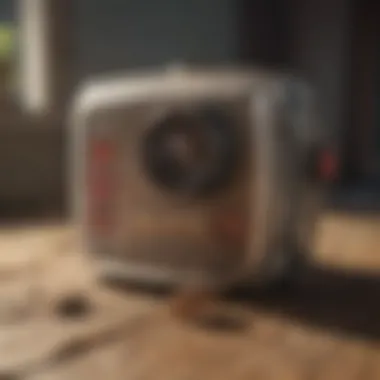
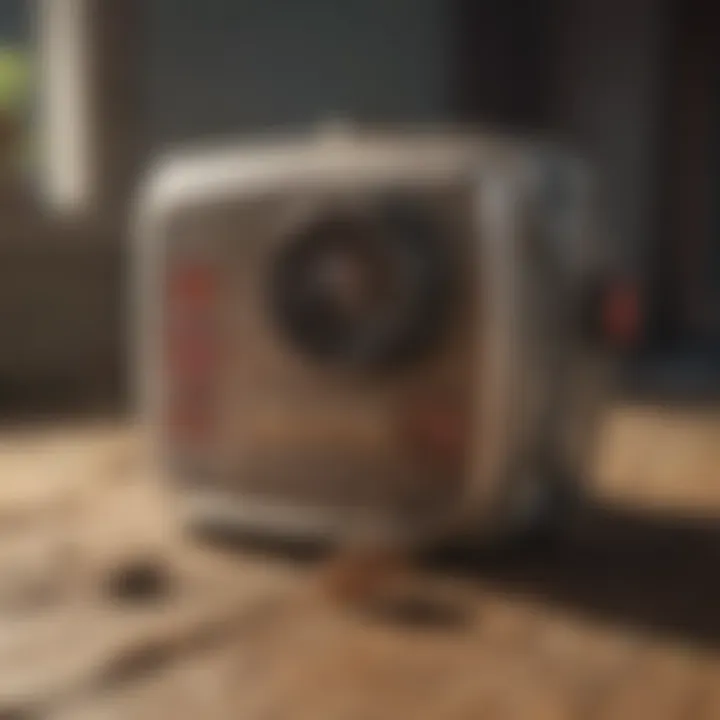
When creating infographics, it is crucial to ensure that the graphics are easily interpretable. Avoid clutter and stick to essential points. Clear visuals help maintain the interest of housewives and homeowners who benefit from visual learning. Proper use of infographics enriches the brochure, making it an effective tool for pest control communication.
Eco-Friendly Pest Control Solutions
In today's environmentally conscious society, eco-friendly pest control solutions are not just an alternative but a necessity. Homeowners are becoming aware of the harmful effects traditional chemical pesticides have on health and the ecosystem. As such, developing brochures that emphasize sustainable pest management practices becomes an essential task. This section outlines the significance of eco-friendly approaches, discussing the benefits and considerations necessary for effective implementation.
Prolusion to Sustainable Practices
Sustainable practices in pest control focus on maintaining the balance of the ecosystem while minimizing damage to human health and the environment. These practices often involve using natural resources wisely, promoting biodiversity, and fostering ecological resilience. The importance of sustainable pest control lies in its dual function: it effectively manages pests while supporting environmental integrity.
House owners can consider incorporating several methods into their pest control routines. For example, maintaining a clean and clutter-free environment can prevent pests from taking up residence. Additionally, encouraging beneficial insects, such as ladybugs and spiders, can naturally keep pest populations in check. Not only does this ensure safety, but it also contributes to lower chemical usage.
Natural Alternatives to Chemical Pesticides
Natural alternatives to chemical pesticides are gaining traction among homeowners. These alternatives are often available in your local garden center or can be easily made at home. A few key options include:
- Diatomaceous earth: A natural powder that can kill pests like ants and cockroaches by dehydrating them.
- Neem oil: Extracted from the seeds of the neem tree, it disrupts the life cycle of insects without harming beneficial species.
- Essential oils: Oils such as peppermint and lavender can repel pests due to their strong scents.
When utilizing these alternatives, it's essential to apply them judiciously. Not every solution will work against every pest; therefore, it is critical to identify the pest accurately before selecting a control method.
Furthermore, the application rate should align with the manufacturer's recommendations to ensure safety and efficacy.
"Promoting eco-friendly pest control is not just a trend; it's a shift towards a healthier lifestyle and environment."
In summary, pursuing eco-friendly pest control solutions offers a comprehensive understanding of effective management without adverse effects on health and the planet. By incorporating sustainable practices and exploring natural alternatives, homeowners can achieve a pest-free home while preserving environmental integrity.
Implementing DIY Solutions
The topic of implementing DIY solutions holds significant weight in the landscape of pest control. This approach empowers homeowners to take charge of their pest management through practical and often cost-effective strategies. With a rise in interest towards self-sufficiency, understanding how to manage common household pests without professional intervention becomes essential. Moreover, DIY solutions can be tailored to fit individual circumstances, responding directly to specific pest issues while fostering a sense of accomplishment.
Identifying Common Household Pests
Before delving into DIY solutions, it is imperative to recognize the common household pests. Household pests vary by season and location but often include rodents, ants, cockroaches, and spiders. Identifying these pests correctly is the foundation for effective control measures.
- Rodents: Typically, mice and rats are encountered, creating not just nuisance but health risks as well.
- Ants: Various species invade homes, particularly in search of food or water.
- Cockroaches: These insects thrive in warm and moist environments, often lurking in kitchens and bathrooms.
- Spiders: While some might not pose a harm, many homeowners prefer to keep these arachnids at bay.
Identifying these pests involves observing their characteristics, signs of infestation, and understanding their habitats. This knowledge helps to select an appropriate DIY strategy.
Step-by-Step DIY Control Techniques
Once pests are identified, it is time to implement control techniques. Here are effective, step-by-step methods:
- Barrier Methods: Start by sealing cracks and openings. Mice often enter through tiny gaps; sealing these can significantly reduce their access.
- Natural Repellents: Use natural ingredients like vinegar, boric acid, or essential oils. A mixture of vinegar and water can effectively repel ants.
- Traps: Set up traps for rodents and insects. You can use store-bought traps or make your own using simple materials. For example, a jar with a bait can help catch mice.
- Cleanliness: Maintain a clean environment. Regularly sweeping and sanitizing areas reduces food sources that attract pests. Ensure food storage is airtight.
- Monitoring: After implementing these techniques, continue to monitor for signs of pests. Keeping a lookout can prevent potential reinfestations.
Implementing DIY pest control solutions not only provides effective management but also encourages a proactive approach towards home maintenance. It enhances the understanding of household ecosystems, making homeowners better equipped to handle potential challenges in pest management.
"Understanding your pest environment is key to effective control. Knowledge is your first line of defense."
For further reading on pests and control methods, check out resources from Wikipedia or engage in community discussions on Reddit.
Keeping in mind the cost and time involved in professional services, along with the satisfaction derived from solving issues independently, implementing DIY solutions is a practical and rewarding endeavor.
Regulatory and Safety Considerations
Understanding regulatory guidelines and safety measures is crucial in the realm of pest control. Without adherence to these frameworks, not only could individuals face legal ramifications, but also public health could be at risk. Regulatory bodies provide structure and oversight, ensuring that pest control methods and products are safe for both users and the environment.
Understanding Pest Control Regulations
Pest control regulations vary by region, reflecting different local needs and ecological considerations. These rules govern the use of specific pesticides, application methods, and licensing of pest control professionals. For example, in the United States, the Environmental Protection Agency (EPA) oversees the registration of pesticide products. This process involves rigorous testing to evaluate their safety.
Some key components of pest control regulations include:
- Registration Requirements: Pesticides must be registered with the appropriate governmental body before they can be sold or used. This process ensures that only products deemed safe and effective reach the market.
- Labeling Standards: All pesticides should have clear instruction labels that detail safe handling, application rates, and protective measures to minimize risks.
- Application Procedures: Certain methods of application, particularly in sensitive areas such as schools or hospitals, may have additional restrictions to protect public health.
Compliance with these regulations not only safeguards users but also minimizes environmental impact. It is essential for homeowners and pest control businesses alike to stay informed about the latest regulations as they can change. Ignoring these can lead to fines and possible harm to the community.
Safety Precautions When Using Pesticides
When utilizing pesticides, safety should be a priority. Implementing proper safety measures can prevent accidents and health issues. One must recognize the importance of personal safety equipment and awareness of pesticide properties. Here are some critical safety precautions:
- Personal Protective Equipment (PPE): Always wear appropriate PPE, including gloves, masks, and goggles, to limit exposure. Manufacturers specify required gear in their safety data sheets.
- Ventilation: Ensure adequate ventilation in enclosed areas when applying pesticides. This reduces inhalation risks and promotes a safer environment.
- Following Label Instructions: Always read and understand product labels before use. This will inform you about proper application rates and timing, as well as any necessary precautions.
- Storage and Disposal: Keep pesticides out of reach of children and pets. Proper disposal is equally crucial to prevent accidental exposure or environmental contamination.


"Safety should be the forefront of any pest management strategy. Ignoring even minor guidelines can lead to significant risks."
By emphasizing these precautions, homeowners can effectively manage pest issues while ensuring a safe living environment. Following guidelines can help address pest control needs effectively, aligning with regulatory standards.
Engaging with the Community
Engagement within the community is a critical component of pest control management. This section will analyze the significance of fostering awareness and collaboration in pest management strategies. Understanding the local ecosystem's dynamics can significantly enhance the effectiveness of pest control measures.
Importance of Community Awareness
Community awareness forms the backbone of effective pest control. Neighbors sharing knowledge about pest sightings can lead to quicker and more accurate identification of pest problems. As communities become more informed, they can take collective action which is usually more effective than individual efforts. The pooling of resources, including time, labor, and information, creates a stronger response against pests.
Community events, such as workshops or informational meetings, can help disseminate critical information. Participation in these activities encourages the sharing of successful strategies and solutions. As people learn more about their role in managing pests, they may become more proactive in preventing infestations.
"Effective pest management cannot exist in isolation; it thrives on shared knowledge and community responsibility."
By creating a network of informed citizens, communities can better understand pest behaviors, which in turn informs control strategies. This can lead to reduced reliance on chemical treatments and promote sustainable practices.
Online Platforms for Sharing Experiences
In today’s digital age, online platforms play a pivotal role in community engagement for pest control. Websites like Reddit provide spaces where individuals can share their pest control experiences and outcomes. Users can ask questions regarding pest management strategies, review products, or share DIY methods that have worked for them.
Social media, especially Facebook, hosts numerous groups dedicated to pest management. These groups serve as hubs where individuals can discuss issues, share resources, and collaborate on solutions.
The convenience of online platforms fosters greater participation, enabling busy housewives and homeowners to exchange vital information without geographic limitations. Moreover, the anonymity of online forums can encourage more people to voice their concerns or share less conventional solutions without fear of judgment.
Overall, utilizing both local community engagement and online forums strengthens the collective approach towards pest control, creating a multifaceted strategy that is likely to yield better results.
Case Studies in Effective Pest Control
Examining case studies in effective pest control is crucial for the development and improvement of related communication strategies. Case studies provide real-world examples that can both illustrate successes and highlight challenges in pest management. This practical understanding benefits house owners and housewives, who can apply learned lessons to similar situations in their own homes. By understanding how others have effectively used pest control brochures, it becomes possible to realize what strategies resonate with the audience, ultimately enhancing the overall effectiveness of such materials.
Additionally, case studies can offer critical insights into the specific elements that contribute to a successful brochure campaign. This information helps future efforts become not only more targeted but also more efficient in addressing pest control issues.
Success Stories with Brochure Campaigns
Success stories from past brochure campaigns can reveal a variety of effective pest control strategies. For example, one local pest control service launched a comprehensive brochure that focused on specific types of pests common in the area. By providing detailed descriptions and images of these pests, they were able to resonate with residents directly.
Residents reported feeling more informed and engaged. Many found the information actionable; they had a clearer understanding of preventive measures they could take, such as sealing entry points and reducing food sources. The direct correlation between a well-structured brochure and increased community awareness led to a decline in reported pest issues in the region.
Another case involved a community initiative that aimed at educating the population about sustainable pest control practices. Their brochure included tips on integrating natural pest deterrents, which appealed to homeowners concerned with environmental impact. As a result, this approach not only garnered attention on social media platforms like Facebook but also cultivated a community willing to embrace more environmentally-friendly practices.
"Effective communication in pest control management can turn information sharing into a powerful tool for community engagement."
Lessons Learned from Community Initiatives
Learning from community initiatives can provide valuable insights into pest management strategies. One notable lesson is the importance of tailoring messages to the specific demographics of an area. In different neighborhoods, pest issues may vary greatly due to environmental factors or living conditions. By addressing these specific concerns, brochures become more relevant and compelling.
Furthermore, community-driven campaigns can reveal the power of collaboration. For example, one initiative that worked with local schools to distribute educational brochures about pest management saw a huge uptick in awareness among parents. This cooperation fostered a greater sense of responsibility for pest prevention at home.
It's also crucial to highlight the feedback loop generated through these initiatives. Gathering data post-distribution on how effective the materials were can lead to improved strategies in future campaigns. Evaluating responses helps organizations refine their messaging and resources to better meet the needs of their audience, whether that be concerned homeowners or novice pest control enthusiasts.
By learning from both successes and challenges faced during these initiatives, pest control efforts can be greatly enhanced. Each case study not only tells a story but contributes to a larger narrative on effective pest management and communication strategies.
Future Trends in Pest Control Communication
The landscape of pest control communication is evolving. It is crucial to understand how modern advancements shape our approach to creating effective brochures. Not only do these trends enhance the delivery of information, but they also improve engagement with the target audience. The rise of technology and accessibility of resources transforms how pest control information can be conveyed. This ensures that both the providers and the consumers can communicate more effectively.
Technological Advances in Brochure Design
Technological advancements in graphic design software have revolutionized brochure creation. Tools like Adobe InDesign and Canva allow for high-quality visual elements to be incorporated easily. Using these programs enables the production of brochures that can stand out in a crowded marketplace.
Incorporating augmented reality is another significant trend. This allows consumers to scan a QR code on the brochure to access additional information on their smartphones. For instance, they can view instructional videos or animation related to pest control methods. Additionally, responsive design techniques ensure that digital brochures are compatible across various devices, enhancing user experience.
Print-on-demand technologies are also gaining traction. They allow pest control companies to customize brochures based on specific regional needs. This ensures that the information is relevant and tailored, addressing local pest issues effectively.
All these innovations contribute to creating brochures that are not just informative but also visually compelling, thereby fostering better understanding.
Virtual Resources and Educational Tools
The digital era has brought forth numerous virtual resources and educational tools that enhance pest control communication. E-learning platforms enable both pest control professionals and homeowners to access valuable training materials. Websites like Reddit and Facebook provide forums for discussion and sharing experiences, allowing homeowners to learn from each other's pest control practices.
Webinars are gaining popularity in this space. They offer interactive sessions where people can ask questions and gain insights from experts in real-time. Moreover, infographics have become a preferred method for presenting complex data in an easily digestible format. By simplifying data visualization, infographics make it easier for homeowners to understand pest behavior and control methods.
Online articles and educational videos supplement traditional brochures by offering depth and context. These resources ensure that readers can engage with content that can lead to practical solutions at home.
"Harnessing technology not only simplifies information dissemination but also empowers consumers to become active participants in pest management."







